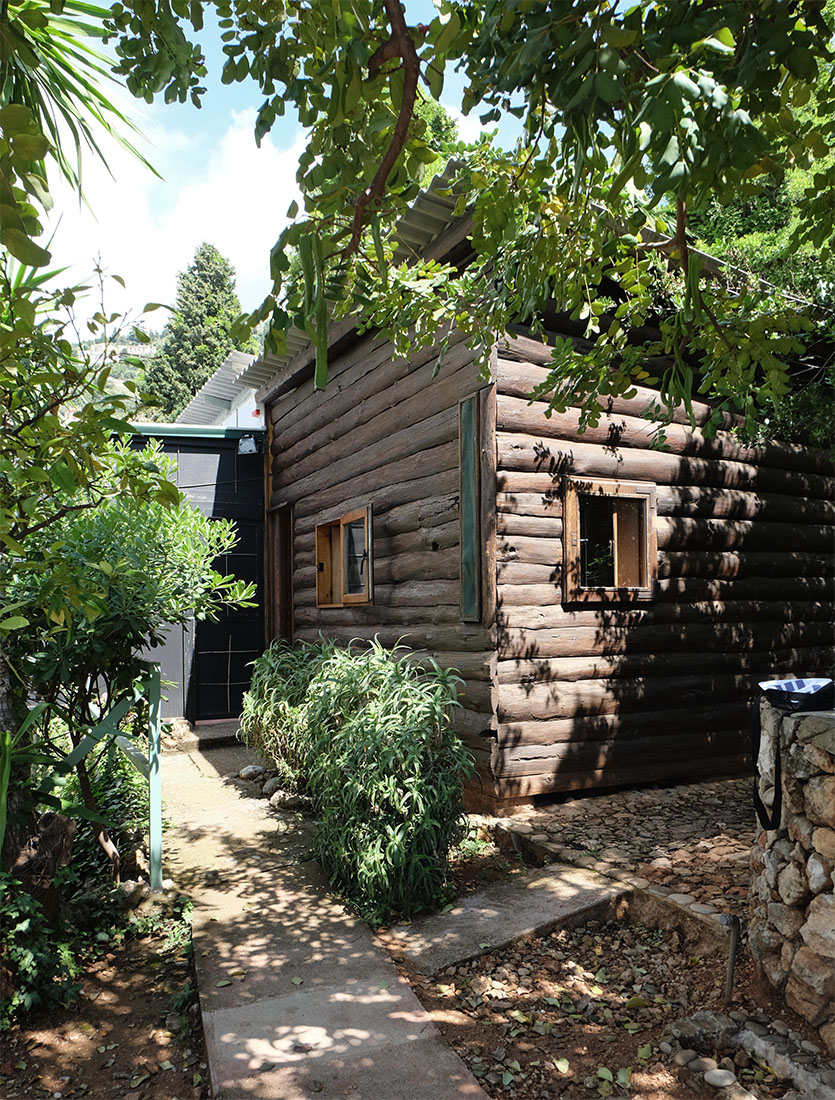 |
 |
 |
 |


Le Cabanon
Roquebrune-Cap-Martin
1951 - 1952
In 1952 Le Corbusier had a holiday home built in Roquebrune, which he called "Le Cabanon" (the hut). Roquebrune with the nearby Cap Martin is located between Monaco and the Franco-Italian border. From this region came the wife of Le Corbusier, Yvonne Le-Corbusier-Gallis. The holiday home Le Cabanon is located on Cap Martin directly by the sea and in the neighborhood of the famous house E.1027 by Eileen Gray. The small building with minimal dimensions was built over a floor plan of 3.66 x 3.66 meters and has a ceiling height of 2.26 meters. The dimensions are based on the Proportion System Modulor. The sparingly installed furniture ensures the practical use of the small living space. The toilet is only separated from the room by a curtain. There is no kitchen in "Le Cabanon", as Le Corbusier was provided with food by the adjoining restaurant. The facades of the building are covered with raw, horizontal boards, the roof is covered with corrugated iron. The band window appreciated by Le Corbusier is not used here, but square and high-rectangular windows provide for exposure and view. The interior of the cottage is clad with plywood panels. In addition to the Cabanon Le Corbusier also built a small work hut. In September 2016, Le Cabanon was recognized as a UNESCO World Heritage Site along with fifteen other buildings by Le Corbusier. Le Cabanon is recognized by the UNESCO as an early and influential example of a functional and ergonomic minimalist home.
1952 liess sich Le Corbusier ein Ferienhaus in Roquebrune errichten, das er "Le Cabanon" (die Hütte) nannte. Roquebrune mit dem vorgelagerten Cap Martin befindet sich zwischen Monaco und der französisch-italienischen Grenze. Aus dieser Gegend stammte die Frau von Le Corbusier, Yvonne Le-Corbusier-Gallis. Das Ferienhaus Le Cabanon befindet sich auf Cap Martin direkt am Meer und in der Nachbarschaft des berühtem Hauses E.1027 von Eileen Gray. Das Kleingebäude mit minimalen Abmessungen wurde über einem Grundriss von 3.66 x 3.66 Meter errichtet und hat eine Raumhöhe von 2.26 Meter. Die Abmessungen richten sich nach dem Proportionssystem Modulor. Das sparsam eingebaute Mobiliar sorgt für die praktische Nutzung der kleinen Wohnfläche. Die Toilette wird lediglich durch einen Vorhang vom Raum abgetrennt. Eine Küche gibt es in "Le Cabanon" nicht, da Le Corbusier durch das direkt benachbarte Restaurant mit dem Essen versorgt wurde. Die Fassaden des Gebäudes sind mit rohen, horizontalen Brettern verkleidet, das Dach ist mit Wellblech gedeckt. Das von Le Corbusier geschätzte Bandfenster kommt hier nicht zur Anwendung, sondern quadratische und hochrechteckige Fenster sorgen für Belichtung und Ausblick. Das Innere der Hütte ist mit Sperrholzplatten verkleidet. In unmittelbarer Nähe zum Cabanon baute Le Corbusier zudem eine kleine Arbeitshütte. Im September 2016 wurde Le Cabanon zusammen mit fünfzehn weiteren Gebäuden und Anlagen von Le Corbusier als UNESCO Weltkulturerbe anerkannt. Le Cabanon wird dabei als frühes und einflussreiches Beispiels eines funktionalen und ergonomischen Minimalhauses gewürdigt.